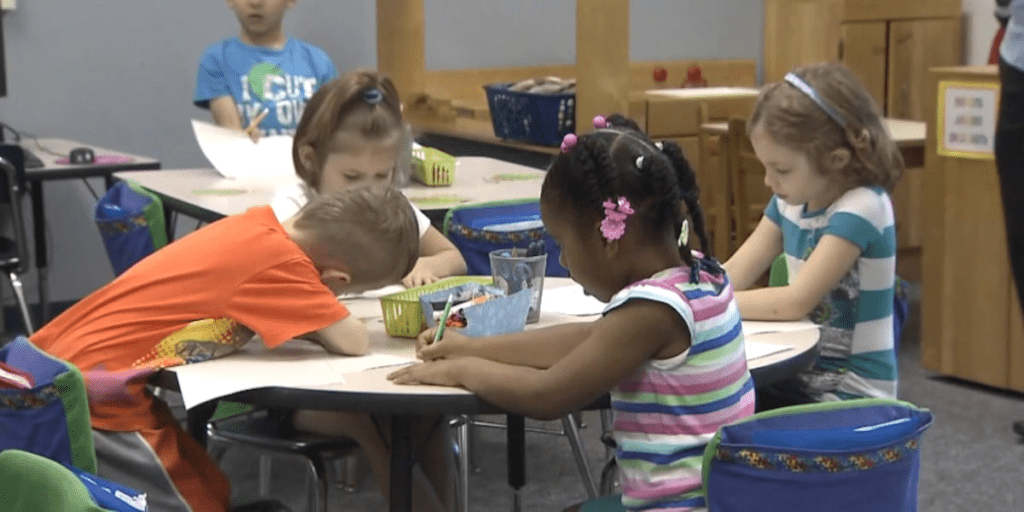ANCHORAGE, Alaska (KTUU) – On the tail end of a special session that overrode the governor’s second education funding veto this year, a group of lawmakers met in Anchorage Monday to move toward what they say is their answer to the ongoing crisis: a task force on education funding.
The meeting, the first for a committee created after lawmakers’ first override of the education funding bill, starts a 16-month countdown to come up with solutions they hope the next legislature will pass.
The task force is composed of six members, co-chaired by majority members Sen. Löki Tobin, D-Anchorage and Rep. Rebecca Himschoot, N/A-Sitka. The other members are Sen. Jesse Kiehl, D-Juneau, Rep. Andi Story, D-Juneau, Sen. Mike Cronk, R-Tok/Northway and Rep. Justin Ruffridge, R-Soldotna.
They weren’t the only lawmakers in attendance; Several other representatives and senators from across the state also attended the two-and-a-half-hour meeting Monday.
“We heard about the hopes and dreams from task force members when it comes to what research and experts they want to hear from [and] what issues they think are ones that the task force should provide additional information and do a deep dive into,” Tobin said.
The meeting focused largely on two items: goals of the committee and where public education currently stands in the state.
“We want outcomes for our students, we want our scores to go up, we want to make sure that we’re producing good students in school,” Cronk said on his goals for the task force.
Cronk and Ruffridge, the task force’s two minority members, focused heavily on how the state would be able to fund education, especially given the state’s fiscal state. Story called the situation a “funding conundrum.”
Tobin said she anticipated learning more about funding schools from the Alaska Education & Early Development Department at the next meeting, which isn’t until October.
The task force also discussed plans to tour the state and visit schools while students were in class to get an idea of the disparities around the state.
“The reality is Alaska is one-fifth the size of the United States,” Tobin said. “When we talk about a system of public schools and [the] public education ecosystem here in the state, it is vast, it is diverse and it has different mechanisms that ensure that each one of our students has access to a high-quality public education.”
Members suggested visiting schools and districts in Anchorage, Juneau, Galena, Kuspuk, Yukon Kuskokwim and Skagway.
Those trips were scheduled to take place largely during October, though Kiehl encouraged visits from the task force to be an ongoing effort.
A looming special session
The special session, called by the governor in July, is technically still ongoing, despite lawmakers telling Alaska’s News Source little-to-no action is planned.
“These are items that are better taken up during the regular legislative session and through the task force that we established and that’s part of the legislation that we overrode the governor on,” Wielechowski said, describing education funding policy in Alaska.
Three bills currently sit in committees from the special session, all drafted by the governor for the session.
HB and SB 1001 expand enrollment options and authorize the State Education and Early Development Board to approve charter schools. It also creates an after-school literacy tutoring grant program and provides “recruitment and retention incentives” for teachers.
HB and SB 1002 establish a five-year pilot program for demonstration of State-Tribal Education Compact schools.
HB and SB 1003 extend tax credits to qualifying contributions to create a “durable funding stream” for tribal-compact schools afforded under HB and SB 1002.
“I don’t think there’s a will to come back to [the] special session and have committee meetings,” Cronk said. “I would hope that the majorities bring those up in their committees, because I do think they’re good bills. Are they perfect? Probably not, but there’s no perfect bill. But I think they’re worthy of the discussion.”
Tobin, who is in the majority, separately told Alaska’s News Source the governor’s bills seemed likely to return to the legislature.
“They’ve already begun the vetting process and I expect that they will continue to move forward in the second session of the 34th legislature,” she said. “Right now, what we are trying to evaluate is how those pieces of legislation might impact or influence how we fund our public schools.”
She also said the meetings were conducted publicly and the governor’s presence at these meetings hasn’t been felt then, nor in the past.
“The invite has been made to every executive branch and we would welcome the governor participating if he would like to listen in and hear more about how the statutory formula funds our public schools and what are some of the levers that we can pull,” she said.
Spokespeople for the governor have not returned comment asking whether the governor or a representative of his office would be present at the Monday meeting. Alaska’s News Source could not confirm whether anybody from the governor’s office was at the meeting.
The governor also has an executive order unrelated to education awaiting discussion in the session, though legislative leadership said they will not discuss it due to — what they say — are constitutional obligations.
The governor replied to them by saying if they do not discuss it, it will become law, an issue that now seems bound for the courts.
See a spelling or grammar error? Report it to web@ktuu.com
Copyright 2025 KTUU. All rights reserved.

